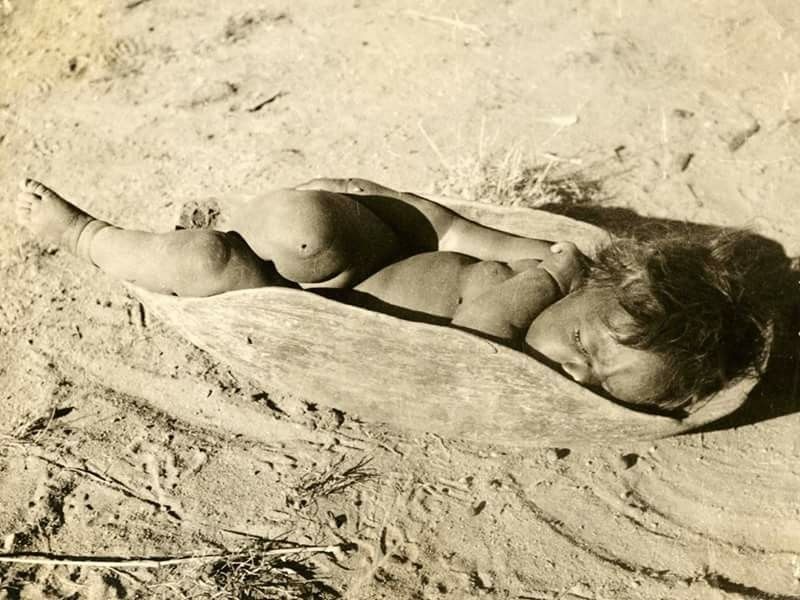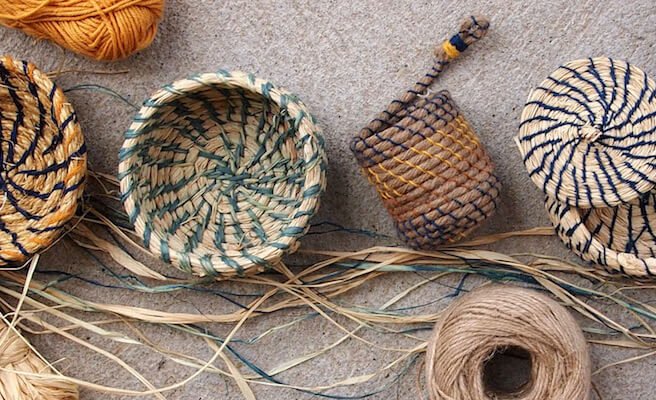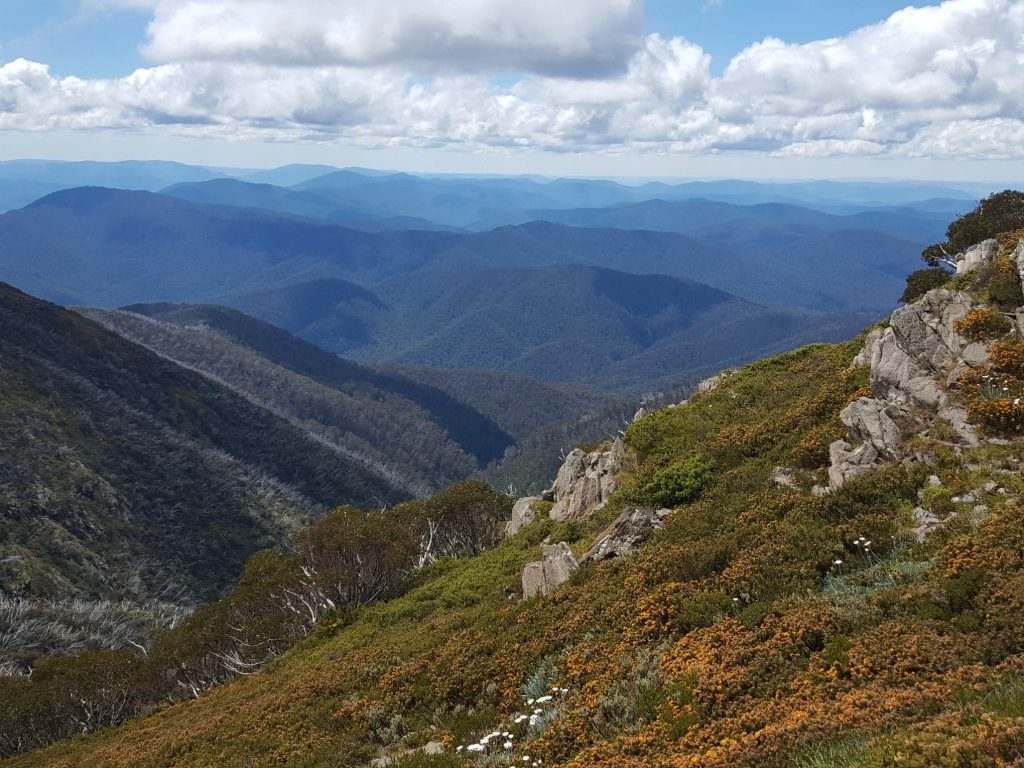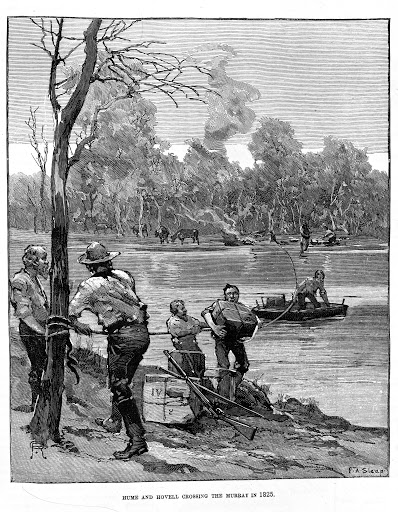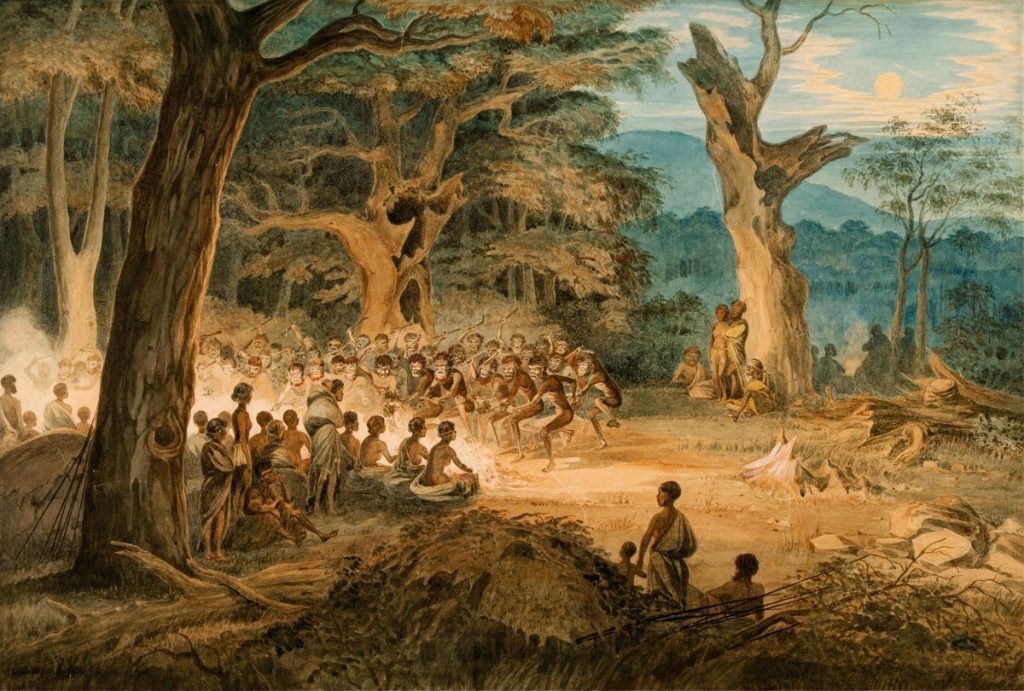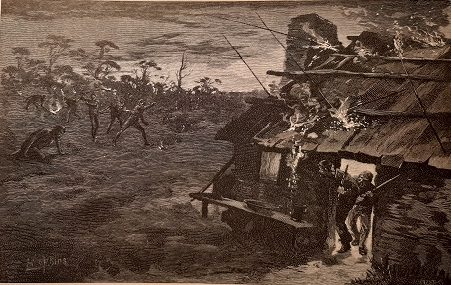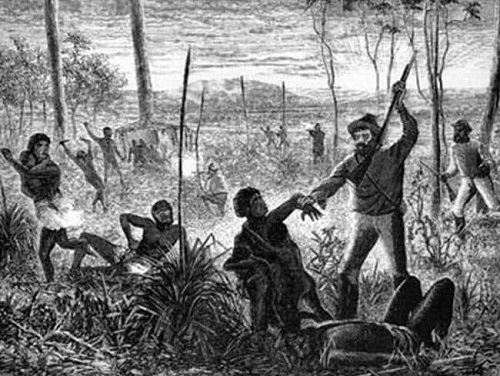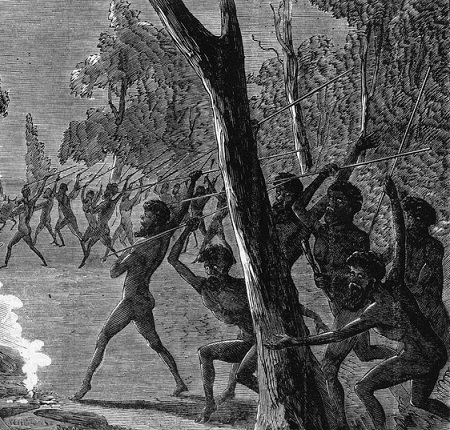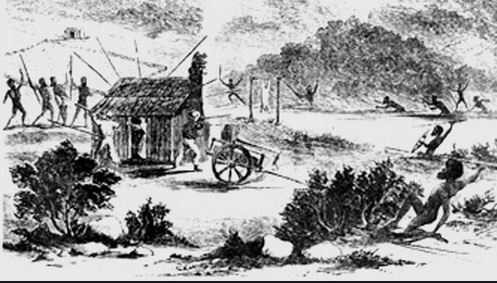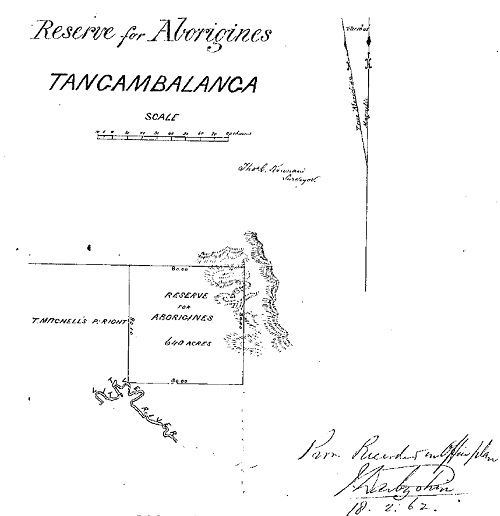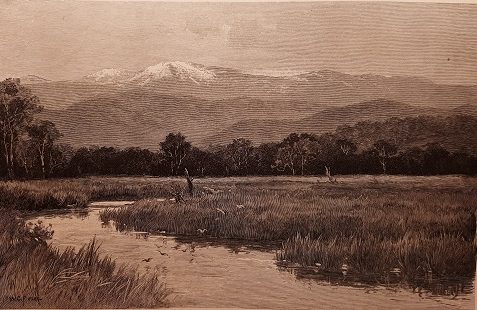Timeline

Merriman was born in 1823
Representational photo by Charles P. Mountford,held at the National Library of Australia. (1) Merriman’s father was Hone.ie.ap, otherwise known as King Billy of Barwidgee and his mother was Bo.en.ger.ner, which, according to GA Robinson the meaning was Mitta Mitta or belonging to Mitta Mitta. (2) Merriman was a Waywurru Pallanganmiddang man and his recorded names were Min.nup and Al.low.wer.row. The white people called him Merriman. (3) GA Robinson took down this information when he interviewed indigenous people on the Murray River. He recorded Merriman as being born in 1823. (2) On pg 269 GA Robinson wrote that Merriman’s ground or..Read More...
Merriman & the Trade Gathering at Mungabareena
Each spring Indigenous people from every direction gathered at Mungabareena for trade, to settle disputes and organise marriages while athletes competed in games of skill. Canoe racing may have been one of the sports Merriman participated in. (1) He was renowned for his ability to navigate the flooded Murray River with its treacherous currents which could swell to two miles wide. (2) Perhaps Robert Brown, who ran the inn at the crossing place witnessed Merriman’s prowess handling a canoe and that’s why he offered him the job of ferrying passengers and goods. Items of trade came to Mungabareena from every..Read More...
Summer on the high plains
After the trading was done an invitation was given to the people by the Dhudoroa and other mountain peoples to join them for summer on the high plains. Bangerang man, artist and educator, Eddie Kneebone told me that all the weapons for fighting had to be placed on the ground and stepped over as a symbol that the time in the high country would be peaceful. Summer in the high country meant the days would be cooler and water abundant, fresh and clear. There was plenty of fish in the mountain streams and vegetables and leafy greens along the fertile..Read More...
Hume & Hovell were the first white men to enter Merriman’s country
In late 1824, Hamilton Hume and William Hovell led an expedition to find new grazing land for the colony. They and their party trekked south from Appin to Lake George, then down into Victoria, keeping west of the Great Dividing Range and ending up at Corio Bay, on the Victorian coast, where present day Geelong is situated. Hovell mistakenly believed they had arrived at Westernport, and did not realise his mistake until after his return. (1) During their journey, they often followed native paths which they said showed impressions of the passage of a considerable number of natives, including women..Read More...
Overlanders begin crossing the Murray River & Robert Brown gives Merriman a job
Merriman was 15 years old when white people began settling in his Waywurru lands. He had seen iron and glass (1) before but it had been broken scaps. Now the white people brought all sorts of wonders and a lad of 15 could not resist wanting to know more about the strangers in their lands. He and his older brother Harlequin began making themselves useful and were rewarded with clothing, handkerchiefs and broken items like bottles and horseshoe nails that could be worked into deadly spear tips. In early 1838 Robert Brown set up his store on the banks of..Read More...
Thomas Mitchell takes up Mungabareena
Thomas Mitchell was 19 years old when he was made master of Mungabareena run, a large parcel of land that would eventually become Albury. (1) He was a teenager like Merriman and Harlequin so perhaps that is what brought them together. Thomas Mitchell made friends with Indigenous people and allowed the gathering at Mungabareena to go ahead each year. His younger brother, JFH Mitchell estimated one thousand Aboriginal people attended the gathering. Thomas and JFH learned the Indigenous language and both made dictionaries of the meanings of words. (2) Thomas Mitchell would have been under great pressure from family and..Read More...
Dora Dora Raid
Merriman and his brothers were said to have led the raid on the Dora Dora homestead, date unknown but probably between 1836-42. The raid lost the element of surprise when King George, a Wiradjuri Elder warned Elliot Herriot the overseer, what was planned. Elliot Herriot ordered his men into the main hut where they waited with guns ready. (1) Yet all accounts agree that Elliot Herriot was on good terms with the Blacks for the first year or so but after that, a lot of strangers joined the little mob that frequented the station. Some of the Mitchell’s thought these..Read More...
Dora Dora Massacre
The Dora Dora Massacre was the reprisal killing of Indigenous people after the failed raid on the Dora Dora homestead. A neighbour, John Jobbins, a convict turned business-man was renowned for his hatred of Indigenous people and decided to send a clear message they had no rights to the land and should never threaten squatters again. (1) About the same time as the failed raid on the Dora Dora homestead two of Spaldings stockmen were speared at Thologolong. It is thought the fear that ran through the settlers caused them to band together under Jobbins and drive all the Blacks,..Read More...
Faithful Massacre
Merriman was said to be one of the leaders of the massacre of WP Faithful’s shepherds on 11th April 1838 where eight shepherds were killed and 10 escaped including their overseer, James Crossley. (1) The cause of the attack was believed to be over the theft of sheep or the desire to plunder the drays. However, In 1883, Historian George Rusden wrote, ‘The men with the sheep quarrelled with the natives at the Broken River. The cause was the usual one. The convict men had trafficked with the women.’ (2) The earliest reference I have found to Merriman being present..Read More...
Reprisal raid to kill indigenous people on the King River
After the Faithful massacre, squatters and stockmen wanted vengeance. JC Bourke the mailman, wrote that soon afterwards a band of heavily armed men, led by Peter Snodgrass attacked a group of Indigenous people on the King River. (1) (1) John Conway Bourke, Letters 1886 – 88 held at the Royal Historical Society Melbourne.
Troopers sent to apprehend those responsible for Faithful massacre
Merriman and his people would have been outraged by the reprisal killing on the King River. It was an ambush with no honour. There had been no warning given and men, women and children had been killed. (1) Forty-two mounted policemen and military men under command of Stewart and Waddy were sent to find those responsible for the Faithful massacre, (2) There was no Government acknowledgment of interference with Indigenous women (3) nor of the indiscriminate slaughter of up to one hundred Indigenous people at the King River in the weeks following the Faithful massacre. (4) The reprisal Killing on..Read More...
Merriman’s failed raid to burn Daivd Reid’s crop
Merriman led an attempt to burn David Reid’s crop on the banks of the Ovens river in January 1839. The attack was thwarted when the stockman raised the alarm. On the day of the attack, David Reid had assembled his men ready to begin harvesting a crop of wheat growing on the banks of the Ovens river close to his hut. When the alarm was raised David Reid raised his gun and shot at one of the retreating blacks and believing he had made a direct hit went in search of the body. He expected the fellow to have fallen..Read More...
Merriman holds George MacKay’s hut in 3 day siege
On 27th May 1840 Dr George MacKay was away from his Whorouly run when Merriman and others of his clan surrounded the hut and made demands. The occupants of the hut were John MacKay, Benjamin Reed and his wife Mary, a bullock driver named Richins and the overseer of their neighbour, Mr McDonnell. (the neighbour referred to was Mr Charles Cropper). This made five persons in the hut. According to John Mackay about 20 aborigines, led by Merriman and with Harlequin among them spent several days terrorising the occupants. (1) Benjamin Reed was newly married and according to Rev Josepth..Read More...
Merriman and Harlequin almost burned to death in hut by angry stockmen
In July Merriman and Harlequin and some of their fellows were captured by squatters and stockmen seeking vengeance for the Mackay raid. “We surprised about sixteen of these treacherous demons. They were headed by the then celebrated, much feared, and diabolical cannibals, “Harlequin” and “Merryman”. We hemmed them in, bound them, and marched them prisoners to an old hut on Mr. George Faithfull’s run. The bullock driver was directed to fetch a few loads of firewood, for I assure you – it was our intention to burn them alive! …When who should gallop up on the scene but Major Nunn..Read More...
CCL Henry Bingham enters search for Merriman and Harlequin
On the 25th of September 1840, Commissioner for Crown Lands, Henry Bingham called at Mr. E. Huon’s station and received information that the five black ringleaders who had committed the siege at Dr Mackay’s station on the Ovens River, had been seen. The next morning CCL Bingham, Mr E. Huon, two policemen and two black trackers set off in pursuit and “For four successive days we tracked them across swamps and gullies, and over mountains and rocks for upwards of fifty miles and in places we were obliged to go on foot, as the track was impassable to horses.” With..Read More...
Major Lettsome unsuccessful attempt to capture Merriman and Harlequin
Major Lettsome left Sydney for the purpose of proceeding to Dr, Mackay’s station on the Ovens River, to inquire into the circumstances alleged to have been committed by the Blacks. Lettsome was supposed to interview Benjamin Reed but the height of the Ovens River prevented him from travelling to William Bowman’s Tarrawingee station where Reed was working as a stockman. Lettsome took a statement from John MacKay about the siege and enquired as to the whereabouts of the ringleaders of the attack. He learned they were believed to have gone to Melbourne. Lettsome travelled to Melbourne and took out 3..Read More...
Merriman hiding out at the head of the Goulburn River
On Tuesday 3rd November 1840, GA Robinson wrote that Dr George Mackay and Mr McDonald (presumably an employee of Mackays) attended the gaol but Mackay said the Blacks who attacked his station were not there. Dr Mackay said the men who attacked his station he knew well and believed they were also responsible for the murder of Mr Chisholms’ and Mr Waugh’s men. Mackay said he believed the wanted men – Merriman and Harlequin among others were presently at the head of the Goulburn River. Mackay also said some of them were the same as killed Faithful’s men. Merriman, he..Read More...
Major Lettsom arrests 400 indigenous people and marches them through the streets of Melbourne
Early on the morning of Sunday 11th, October 1840 Major Lettsom and his men surrounded a peaceful camp of 400 Indigenous men, women and children and arrested them. One Indigenous man was killed before the people were marched at bayonet point through the streets of Melbourne and locked in the stockade. Lettsom was looking for Merriman and Harlequin amongst others involved in the siege at Dr George MacKays station at Whorourly and other attacks on squatters. GA Robinson wrote an account of the arrest in his journal. He said 3 tribes, Boonerong, Waverong and Tar.doon.gerong were camped on the Merri..Read More...
Arrest of Harlequin, his brutal treatment and death in gaol
Image is representational of Harlequin’s ordeal and is taken from a Postcard, titled, ‘A Local Lock-up. Aboriginal Prisoner Chained to a Tree.’ On 29th November 1840, Sargeant Henry Rose went to Irving’s station near Yackandandah to collect Harlequin who had been arrested on a warrant and detained. (1) (2) Spelling in those days was phonetic so ‘Irving’ could be ‘Irvine or ‘Irwin’ or even ‘Ewing’ or ‘Huon’. Charles Huon had Baranduda station located 11 miles from Yackandandah. Harlequin was handcuffed and put in a small collar chain, something like a dog chain fastened with a small padlock. Then, later on,..Read More...
Six blacks captured and placed under arrest at Dr MacKays
On the morning of Friday, the 4th of December 1840, six blacks, who were captured by the police under the orders of Dr. Mackay, were brought to the head station. They were detained in custody, with the exception of Tommy, who was discharged.
Escape from MacKays
Those natives, on the morning of the 6th December, effected-their escape from-Dr. Mackay’s head station, and were fired upon by the police who had them in charge. In consequence of this escape, parties were again out in quest of them; on which occasion two of Mr. Commissioier Bingham’s police, on the 6th December“, went to Mr. Docker’s under warrant to apprehend Tickerneedle and another black, who were charged with felonies; they escaped, and the police, with the view to intimidate, fired over their heads.
Arrest of Joe Mole-le-nin-ner
On the 24th December a mounted trooper, accompanied by Benjamin Reid, a stock-keeper who was held in the siege at Dr George Mackays’, and another man, apprehended at Mole-le-nin-ner” alias Joe. Joe was a valued employee of Rev Joseph Docker at Bontherambo. Docker complained that Ben Reid was intoxicated during the capture of Joe. Docker said they put a collar on Joe and took him away. Mr Docker further complained that Reid was extremely insolent and ‘swore he would shoot every bloody black on the river.’ There is reason to suppose that he (Benjamin Reid) was a cause, if not..Read More...
Merriman returns home
GA Robinson gave Merriman ‘slops’ otherwise known as sailors loose clothing Robinson also found Merriman a seat on a cart heading north up the Sydney road that would take him home. Merriman is keen to collect his ‘king plates’ from the police station where he left them for safe keeping.
Merriman is made a constable
GA Robinson on 10th February 1841 asked Jim Crow, Mickey and Joe Mole.ler.nin.ner (Merriman’s brother in law) to identify three constables of their own choosing. GA Robinson thought highly of Joe writing he was a gentleman and was well thought after. Rev Docker of Bontherambo agreed with this saying much the same. On the same day, 10th February GA Robinson wrote that Jim Crow chose three constables among whom was Merriman. I thought it best to leave the choice to themselves. Merriman’s appointment as with Jim Crow, Joe and Mickey were not officially recognised and their names are not recorded..Read More...
Benjamin Reed TOL revoked and he is returned to Sydney
9th April 1841 Benjamin Reid has orders issued by Gov Gipps to have him sent to Sydney and his ticket of leave revoked. This is due to GA Robinson’s persuasion and a letter from J Docker.
Tangambalanga Aboriginal Reserve
Thomas Mitchell
Thomas Mitchell takes up Bringenbrong
Bringenbrong was purchased by Thomas Mitchell from the Leslie family in about 1876, returning from a very short stint in New Zealand after he left Tangambalanga in 1874. (from Megan Carter)

